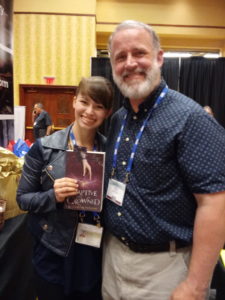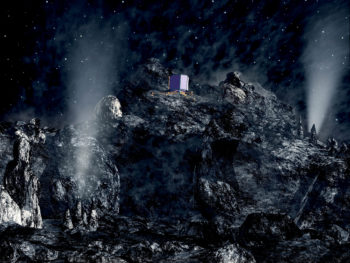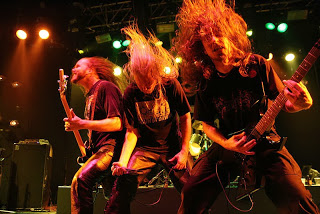Labor Day
Today marks the Labor Day holiday here in the US. I wish it had fallen yesterday, which was 9/1/19, almost as cool a date as was 1/9/19. But it’s set for the first Monday in September, which this year happens on September 2, not September 1.
Be that as it may, few people seem to understand what Labor Day is, except a day off work and out of school. Used to be, in many parts of the country, Labor Day was actually the signal that school was starting, that autumn was setting in, that summer was over.
Lots of folk take advantage of the “last summer day” by planning weekend trips to nearby vacation spots or by hosting a backyard barbecue or a beach bash. When I was teaching, Labor Day was a work day during which I set up my classroom and planned my lessons. More and more schools have rushed the start of school to August, so teachers may be joining a good portion of the work force to take it easy and to catch their breath before the days grow shorter than the nights and a nip in the air replaces the heat of the summer.
None of that explains what Labor Day actually is.
In fact, the holiday is rooted in the labor movement which played a significant part in the development of America as it is today. Mind you, I’m not a fan of strikes. I hate sport strikes more than any other, but largely, the principles of creating a work environment that is good for workers, is widely understood to be good for business, so generally is not contested by owners and managers.

Protest against child labor, one sign in Yiddish, the other in English
Owners often got rich on the backs of those workers or because of business policies that came from monopolies and unfair practices.
Society slowly rose up against this disparity between owners and workers. A few novels came out, exposing abuses of power created by manipulation. One such book was Upton Sinclair’s The Jungle, a story revealing the awful conditions in the meat industry. Not for the animals. For the workers! As it happened, it also exposed the unsanitary practices that endangered consumers:
Jurgis Rudkus, a Lithuanian immigrant, finds work to support his struggling family in Brownâs Slaughterhouse in Chicago. The conditions are poor and the morale is even poorer. The workers of the slaughterhouse face a depravity that worsens with each passing day.
Though Upton Sinclairâs motivation was to showcase the poor working conditions of industrial workers, The Jungle caught the publicâs eye for its ways of exposing the health violations and unsanitary practices commonly found in the meat packing industry. The book led directly to the passage of The Meat Inspection Act of 1906.
People can argue about the labor movement—it was heavily influenced by Marx and Communism. Socialists were at the forefront of many of the early labor actions, such as the parade in New York in 1882 (pictured above), and many resulted in violence. But there’s no doubt, the development of labor unions and their consolidation at the end of the 19th century, changed the face of America.
In many ways we can thank labor unions for the growth of the middle class. For those interested i a bit more detain (but not too much), I recommend “Have we forgotten the true meaning of Labor Day,” a 2017 article by Jay L. Zagorsky, a senior lecturer at Boston University. Nothing too heavy. Just interesting to be reminded of or to learn how Labor Day came into being.
Now, for a connection to speculative writing. I’ve discussed work in speculative fiction before, but are there work stoppages in any speculative stories you can think of? Any economic class wars? Any dissatisfaction with the working status quo? I’m hard pressed to think of any. Mostly Big Government is the entity against which the protagonist is fighting. Or one government against another. Or simply one person trying to take over the government.
I find it fascinating that the struggle in so many of our books has been for the control of government more than for the control of business or labor or the legal system or the courts. Maybe the fight for government seems more important and therefore a bigger stake, but I suspect it is actually a reflection of our society and how we view government today.
Your thoughts?
And enjoy your day off!











































 This collection is charmingly fanciful, and at times playfully absurd. It is, moreover, unique in the different flavors of fairy tale it offers. The book is admirably broad-minded in its inspiration, drawing from Scripture and history and legend. I am going to briefly sum up the four classes of fairy tale in this book, prefaced by two observations. One of these is positive, and the other less so.
This collection is charmingly fanciful, and at times playfully absurd. It is, moreover, unique in the different flavors of fairy tale it offers. The book is admirably broad-minded in its inspiration, drawing from Scripture and history and legend. I am going to briefly sum up the four classes of fairy tale in this book, prefaced by two observations. One of these is positive, and the other less so.




 We see all those options represented here at Spec Faith. When we run Fiction Friday excerpts, for example, readers can be introduced to a book published by Tor Teen such as we ran Friday—
We see all those options represented here at Spec Faith. When we run Fiction Friday excerpts, for example, readers can be introduced to a book published by Tor Teen such as we ran Friday—
 âRain.â
âRain.â STORMRISE AUTHOR BIO—
STORMRISE AUTHOR BIO—




 2. Metal is dark and cynical.
2. Metal is dark and cynical. 3. Metal takes pride in being outside the mainstream.
3. Metal takes pride in being outside the mainstream.


